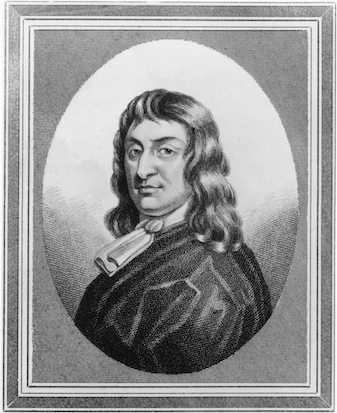In the words of one of his contemporaries ‘a man of down look, lean-faced and full of pock holes’, the 17th-century ne’er-do-well Thomas Blood sounds an unattractive proposition. His latest biographer, Robert Hutchinson, works hard to imbue him with the pantomime glamour of a lovable rogue.
Hutchinson roots Blood’s rackety life firmly within the context of the equally rackety Restoration underworld, with its network of spies and spymasters, venial courtiers and religious fanatics. Appropriately he makes vivid use of the sort of rhetoric more often associated with old-fashioned adventure stories. His Blood is a forerunner of the Scarlet Pimpernel, ‘a man of action who would risk all to liberate his friends even at the eleventh hour’; he indulges in ‘madcap’ and ‘harum-scarum’ ‘escapades’ and his chief weapons are ‘daredevil audacity’, ‘astonishing effrontery’ and ‘buckets of Irish charm’.
It’s a valiant effort and a rigorously researched account. Hutchinson endeavours to invest Blood’s naked self-interest with a quasi-heroic dimension and, more surprisingly, to provide evidence of a deeply held religious sensibility. But while there’s no doubting Hutchinson’s conviction, this reader just isn’t buying it. Blood’s unrelenting opportunism swiftly acquires a predictable quality. In the flesh, I suspect, his popinjay arrogance had a risible dimension: on the page he appears too often greedy, self-important or just downright nasty.
Thomas Blood is best known as the slippery Irishman who, in the late spring of 1671, attempted to steal the crown jewels. Newly purchased by Charles II following the restoration of the monarchy, these included a crown, orb and sceptre, all of which would certainly have made their way into the melting pot but for the unexpected appearance on the scene of a civic-minded Swedish engineer, Martin Beckman, who successfully foiled Blood’s plans.
By then Blood himself had part-flattened the imperial state crown in order to conceal it under his cloak, loosening and losing several diamonds and a large pearl in the process.








Comments
Join the debate for just £1 a month
Be part of the conversation with other Spectator readers by getting your first three months for £3.
UNLOCK ACCESS Just £1 a monthAlready a subscriber? Log in